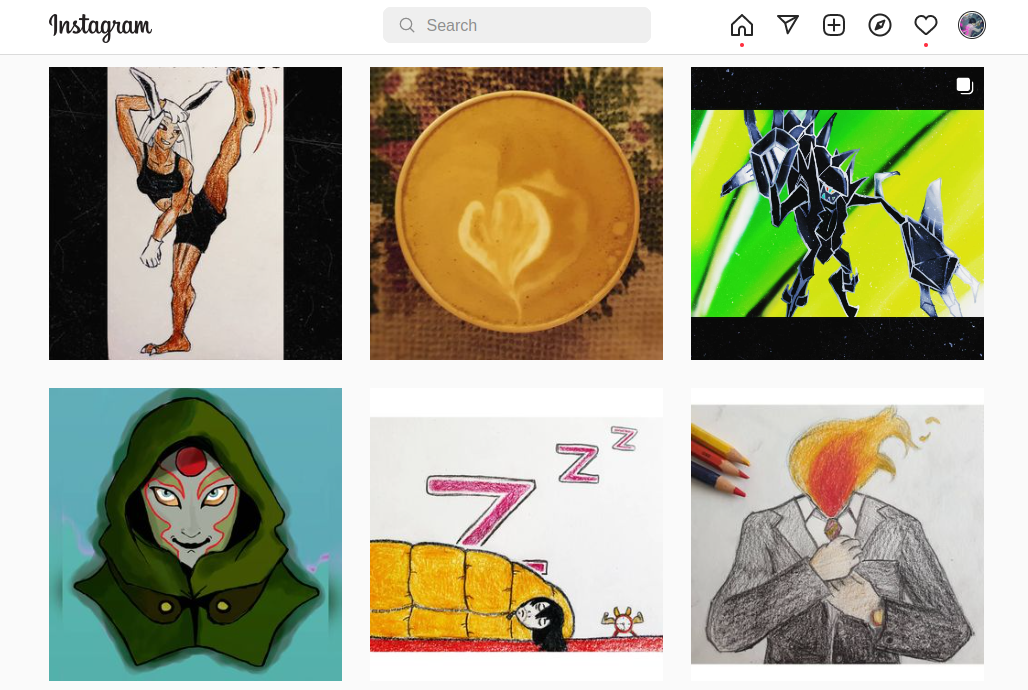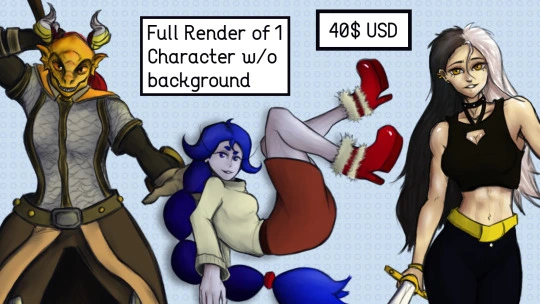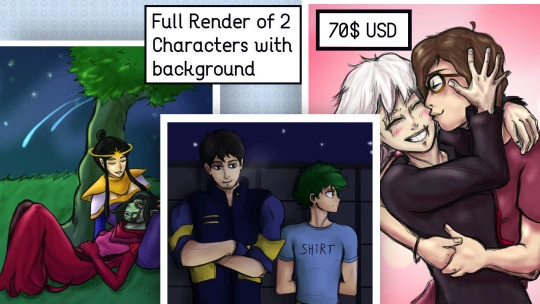July 10, 2022
In 2020, right when COVID-19 hit, my academic year in University was cut short - then I found myself with more time than expected on my hands.
I had been considering the idea of making money on the Internet for some time before that. Since my first job ever was at a local coffee shop, I had quickly realised that customer service jobs weren’t really my jam. No hard feelings on that front, I did enjoy learning tons about coffee and only occasionally running into a rude customer.
But the question remained - how does one actually proceed with making money on the Internet? Of course, I had seen quite a few success stories online, but people like that always seemed miles ahead and almost unreachable in scope.
This is when luck and boredom blessed me together in the midst of the first lock-down. I had enough time on my hands to revisit my old passion for art - and more particularly, digital art. I had a graphic tablet in one of my drawers, nothing expensive, just enough to bring my drawings to the digital canvas. And let me tell you, my initial drawings in those first months were decent at best. You can see for yourself over here, it’s quite humbling to see what almost all amateur art starts off as.

My first commissioned drawing came around April 2020, and it was for the magnificent 3$! I was in awe, I could actually make money through my art, and this spirit has been with me ever since.
It was a given though, that I needed to hone my art skills quite substantially if I wanted to keep the money machine running. That first digital art commission was a bit closer to a donation anyway, and it wasn’t because my art was a masterpiece at all. However, it was enough to incentivise me, and give me momentum to get it started. I was now a digital content creator!
How I built an income stream
The first few commissions came from Instagram, where I have been building an audience for a while. Here is a bit of hope for you: I think I had ~500 followers at the time of my first commission, and they have since increased to almost 9k at this point in time.
However, I had to increase my reach somehow - my posts in the beginning were simply not reaching enough people who would consider commissioning me draw digital art for them. So I decided to move forward with some social media expansion.
Twitter was a viable option at the time, but there is one reason why Twitter didn’t work for me in terms of digital art. It was because of the types of users it attracts. The average Twitter art enjoyer follows so many different art accounts that your drawing simply disappears into the void most of the time. Even a true fan may end up not seeing it because of the pure volume of content being created by the second. We could argue that a similar problem exists in Instagram, but at least your “Profile” section remains consolidated and actually resembles a portfolio. This means that when someone happens to visit your profile, they are still exposed to your portfolio of drawings, and may end up following you. With Twitter, it’s a tad bit more difficult in that regard.
Surprisingly, my art found good success on Tumblr. Tumblr is a relatively unknown social media nowadays, but it used to be the OG blogging platform. It is currently the best place for people in different fandoms to catch up on fanarts, fanfictions, and other artistic material. I was so pleasantly surprised that Tumble people actually liked my content that I wrote another blog post on the topic of Tumblr as a social platform for creators.
The common denominator for all platforms though, was a simple question: How do I build a respectable portfolio when I don’t have that many clients in the beginning?
The solution turned out to be a simple one, even though it took me a long while to realise. When you don’t have clients in the beginning, you have more time to spend on projects to attract more clients. Later, when you already have the clients, this will be the main part of your work - working on their projects. But in the beginning, to build a portfolio, you need to do some fan projects, essentially build and provide value for free.
I believe that building a portfolio is a long-term goal, and is something that can be tweaked and expanded every day by a little bit.
So, fast-forward 2 years, it’s now 2022 and I have a semi-regular stream of past clients who provide me with the occasional commission. Since it’s a freelance craft, it’s still an irregular type of income, but I can now expect to be approached by clients much more often than before. It helps a lot when you add that you have 2+ years of experience in the craft in your portfolio - this slowly builds up the moat between beginners and experts in a domain.
When do I raise my prices?
If you have ever sold some type of digital product or service, you will know the struggle of pricing. We often tend to undervalue the time and energy it takes us to go from a blank canvas to a finished piece. And it’s not like one price fits all creators and all products. A drawing may take me 3 days, while it takes Picasso one day, but that doesn’t mean that I shall price my work 3x higher than his.
Here are some parameters to take into consideration when pricing your product or service:
- Time it takes to complete
- Expertise/Knowledge/Unique value you can provide
- Materials and resources you need
- Competition
And once you have priced your work and had a few clients, you will probably reach realisation #2:
Is it time to raise my prices?
People would give you different answers to this conundrum, but the main takeaway for me is to take 2 things into consideation.
- How much your style/the value you provide has increased in quality.
- How much more expertise have you gained.
My current model is to have a base price for one unit of work (in my case it is 40$ for a Digital Artpiece of one humanoid character, which usually takes me 3-4 to complete), and then add to the price with the added difficulty. You need me to draw 2 characters instead of one? Then the price increases to 60$. Background? 10$ more and it is a deal.
This way, I have set boundaries for the work I provide and now not every purchase is a price negotiation.
As for the long term, I tend to make some changes to my pricing every 6 to 12 months. I believe this is the right amount of time to have grown as an artist enough to increase your prices. Keep in mind, my first commission was just 3$, so it took some time to go from 0 to 100.
How to deal with confused clients
I have encountered more people in my life that do not know a lot about digital art than such that do. Many people have some prejudice that “the computer makes it so easy to draw” or that it just takes no materials (as in paint, pencils, etc.), thus it should be ridiculously low-priced, if not free.
Often, I also meet people online who are well-intentioned, but are not sure what they want as a client. Do they commission me to draw an original character (OC) of theirs? Do they order a commission as a gift for a loved one? There seem to be so many options when speaking with an artist that clients go into analysis paralysis.
I have found a way to make the process easier for them.
From the get-go, they see my product sheet, as you can also see below.


They can see that I mainly specialise in human-like characters in a semi-anime style. It could also lean into the “Dungeons and Dragons” direction, and my style is notorious for the bold colour choices.
This makes it easier for the client to make the decision right-away - they either like what they see and can imagine their own idea in my style or they don’t. And this helps in weeding out the bad clients from the good ones every time.
Keeping the client happy
The last takeaway I made on the topic of making money with your art online is to provide a good service. This doesn’t mean to just make good art though.
More often than not, my drawings are not the thing that makes clients enjoy the process so much. It’s the communication, the timely notifications, the transparency, the feeling of engagement in the process.
I have found that it is extremely important to do the following when you are commissioned a drawing:
- Set deadlines and expectations from the beginning.
In my case, I provide a rough draft, a coloured version, and a final drawing in 3 different stages so the client can see the progress and request alterations if need be.
- Be transparent.
If your client has a clear idea of what they will receive as a final product, they would be much happier. The way I provide transparency is by showing them previous work of mine in the beginning, so they can imagine what their own characters would look like in my style.
- Make them part of the process.
The way I accomplish this is by asking for feedback, getting to know the client’s taste and catering to it.
So overall, it has been quite the journey since my first 1$ online. I can’t say for now that I have “made it” as a content creator yet, but I feel like I have made some progress since 2 years ago, and I believe my story would be helpful in your own artistic journey as well.

